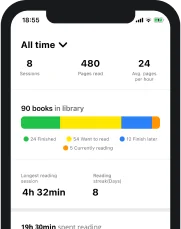When it comes to improving our memory and our ability to increase the speed and efficiency of our information retention capabilities, scientists are constantly hard at work trying to find the secret to the perfect memory. A lot of different memory-enhancing strategies have been developed over the years, some more efficient than others.
The chunking memory strategy, otherwise known as the chunking technique, is one of the simplest, most efficient, and science-backed mnemonic devices. While it comes with a bunch of benefits for the user, it also has a couple of limitations, but we will explore all of them below.
What is chunking information and what has it got to do with the memory?
Understanding the chunking memory technique and applying its principles in your day-to-day activities may turn out to be a great way to improve the amount of information you are able to retain while reading or learning and the time you need for that information to remain safely stored in your memory. To achieve that though, you will need some basic information about the technique and how it actually works.
What is chunking information?
The principle of information chunking is solid. Taking a big piece of information and splitting it into several smaller pieces that are easier to manage is called chunking. The claim of the chunking technique for memory improvement is that grouping the small information pieces into larger units makes the information much easier to remember than trying to memorize it in one big piece.
As a chunking memory example, the most obvious thing to do is take a phone number and find out how chunking makes it easier to remember. Let’s assume we need to quickly remember a sequence of 10 digits that represent a phone number. For simplicity’s sake, our sequence will be 9893424501. Seeing it like this is not exactly easy to read, let alone memorize. Chunking means splitting the digits into smaller groups that are easier to handle and remember. It goes something like this:
- Chunk 1: 9893
- Chunk 2: 424
- Chunk 3: 501
Let’s now see why doing this can have a positive effect on our memorization abilities.
Why does the chunking technique work?
In order to understand why the chunking technique works, you first need to know a little something about a concept that was dubbed by scientists back in the 1950s: The Magical Number Seven.
While the concept has been debated for decades and goes much deeper than this, what is important to remember from it now is that scientists have found that our brains have a pretty clear limitation on the amount of information they are able to retain at once. To be more precise, regular people who don’t use mnemonic devices or don’t have out-of-this-world memorization abilities are usually only able to remember 7 pieces of information at once.
That means that without using any form of chunking, it would be close to impossible for any of us to easily remember a 10-digit phone number (at least not with all the digits in the right order).
The brain is a biochemical machine and has physical limitations when it comes to the strength of the synapses formed, which in turn translates to an inability to recall large pieces of information after glancing at them once. The short-term memory simply cannot create strong enough neuronal connections to withhold all that information without scrambling it (messing up the order of the digits in a phone number for example).
The chunking memory technique is the workaround scientists have found for this problem. Memorizing smaller pieces of information is the key to being able to memorize the bigger ones, as weird as it may sound.
Give Your Reading Experience
An Extra Boost With Basmo
Track the books you read, monitor the time you spend reading and keep notes on your reading habits and how it makes you feel. You can set yourself targets for the time you spend reading and you can get notified whenever you’re behind on your reading time.
What are the chunking memory techniques?
Memory improvement strategies or mnemonic devices are certain techniques used with the purpose of consciously improving one’s memory. They include various association techniques or ways of exploiting our brain’s limitations to the maximum. The use of mnemonic devices can have a huge impact on how quickly and how efficiently we manage to retain information.
Several mnemonic strategies stand out from the rest both in terms of effectiveness and in terms of how solid their foundation in neuroscience and psychology is. Some of the most commonly known and used are:
- The Loci technique (memory palace)
- Spaced repetition
- Chunking
The chunking memory strategy relies on actively and consciously grouping large pieces of information into smaller groups that are easier to remember and keep track of. It is especially effective in attempts to memorize long strings of numbers or lists of multiple items.
Aside from the phone number example I provided above, you should know that people who can remember large numbers of decimals from the famous pi number for example definitely use the chunking technique. Also, med students who have the seemingly impossible task to learn the name of every bone and muscle in the human body also use it quite often.
Despite being one of the oldest and most commonly used (even unconsciously) mnemonic techniques, the chunking method requires a little less practice and effort than many others.
How to use chunking?
While the way chunking is used may come naturally for some of us, it still requires a little work in order to achieve the best possible results. There are a couple of simple steps that need to be followed.
1. Make sure that chunking is the right choice for your task
The chunking technique works best for pretty specific types of information and is clearly not meant to help in all learning scenarios. While spaced repetition and the Method of Loci are more complex alternatives and come as great solutions for more difficult learning tasks, the chunking technique is the perfect way of remembering strings of numbers, enumerations, codes, and lists.
2. Look for connections
As you group the information you want to remember into smaller chunks, try to look for certain connections between the groups in order to be able to differentiate them and keep them in the right order.
For example, if you’re trying to memorize a to-do list using the chunking technique, you can group the items on the list based on the location where the task needs to be completed and work your way from one location to another.
3. Make associations
A general rule when it comes to memorizing pretty much anything is that associations can help out a lot. Finding connections or associations that have a meaning to you will make it a lot more likely for you to be able to remember certain things.
For example, let’s assume you’ve created a long shopping list and you’re trying to remember all the items on it. Group the items according to the meals you are going to use them for. Do you need flour, cocoa powder, and nuts? Associate them with the smell and taste of the cookies you are going to make when you get back home from your shopping trip.
4. Practice
Just like anything else, the chunking technique requires a bit of practice before you manage to master it. Even though it comes naturally to a certain extent for most of us, with a bit of practice we can use it consciously with much better results.
Try the method out with random strings of numbers, authentication codes, and lists of random letters or words. Teaching your brain to do the chunking, create connections, and make the necessary associations will come in handy whenever you will be faced with the requirement to memorize something quickly.
5. Improve
Whether it’s through practice, old-school trial and error, or by implementing all kinds of different other memorizing strategies in the chunking technique, the important thing to remember is that it can be improved. Keeping track of your progress with the chunking technique is the key thing to focus on if you want to take things further and make chunking a life-long memorizing companion.
Here’s where Basmo can help. Basmo is a reading tracking app that comes packed to the brim with interesting features aimed to help the modern reader take his hobby to the next level.
Basmo can help you increase the amount of information you retain while reading, while also providing you with a couple of great alternatives in case memorizing strategies fail you.
It encourages you to be more mindful about your reading, to take notes during your reading sessions and even keep a journal. While the notes feature is pretty self-explanatory in the context of remembering the important information from what you read, the more interesting one when it comes to implementing the chunking technique into your routine is the journaling feature.
By keeping a journal as you read, you can enhance the experience of using the chunking technique and improve it as you go.
You can make notes of the progress you make and the amount of information you manage to retain from the books you read and you always have the option to go back and check your journal annotations to see what you can improve or change to perfect the technique.
How can chunking improve memory?
While the main benefits of the chunking technique are rather obvious, there are some that are not as easy to spot. Here’s why using the chunking technique is a lot more beneficial than it would first seem.
- It improves your memory in the long run. Not only will it help you remember things now, but using this technique will also have a positive effect on how your brain functions in the long run. Making the active effort of grouping items, finding connections, and making associations is a great exercise for your brain. In time, this will keep your mind in top shape for longer and will have a positive effect on how well you are able to memorize things even without using the technique.
- It is easy to use. Of all the mnemonic techniques developed so far, chunking comes with the best difficulty to efficiency ratio. It takes a lot less effort than the Loci technique or spaced repetition and it can work wonders for your ability to memorize surprisingly complicated pieces of information.
- It teaches you to process and synthesize information better. Constantly trying to memorize grouped items and remembering them in the right order or with the right associations will create neuronal connections and pathways in your brain that will allow you to process information in a more efficient way.
Conclusion
What is chunking memory and what is it good for? Well, this mnemonic technique is probably the first one you should learn and one of the most effective tools for a better ability to retain information. It is great for memorizing lists, numbers, or random words or phrases, and pairing it with the many features Basmo has to offer will be of great help.







